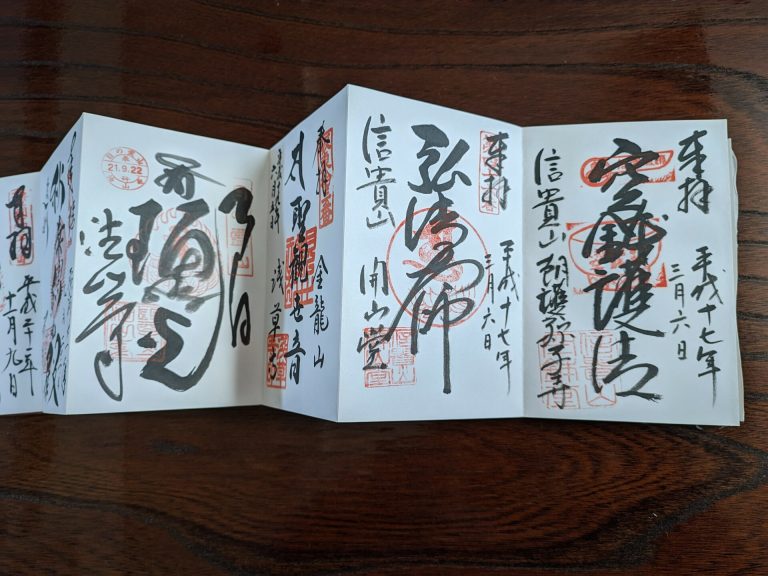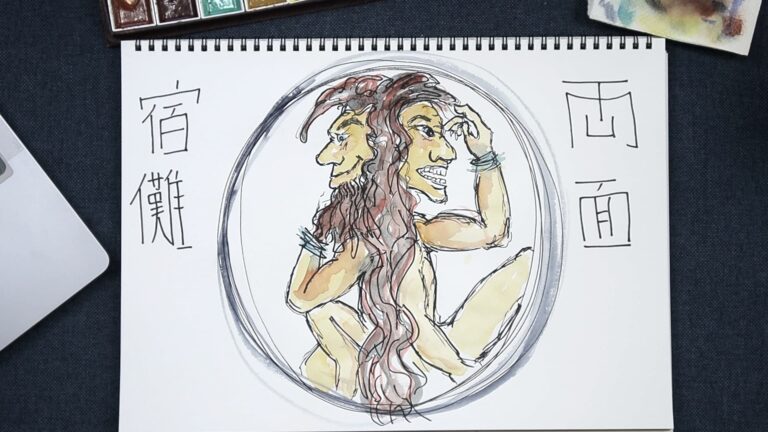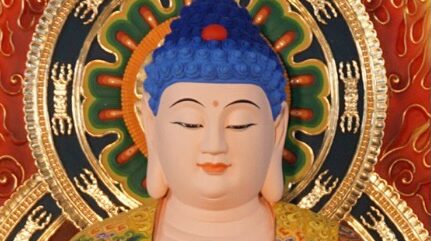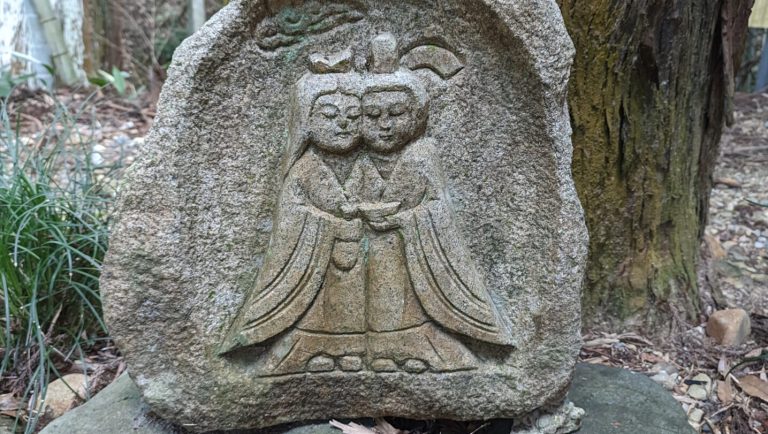His eyelids. He cut off his eyelids. But that is not all that the Daruma (Bodhidharma) is famous for. He’s the man who brought Chan to China and Zen to Japan. Some say he taught the Shaolin monks how to fight while other tales talk about how he invented green tea, or well, his eyelids did.
Join me and a thousand singing night insects while in episode 40 I tell you about the great sage, Daruma.
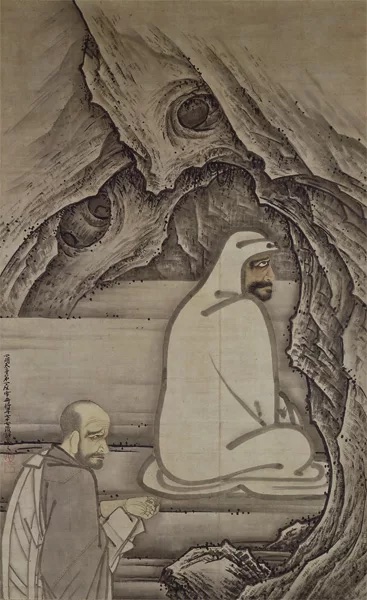
Also, you know how if you wait until the end of the credits in some movies you’re rewarded with a little something? I won’t say what, but my Sound Guy was a bit cheeky this episode. I wonder how many of my listeners will get the reference. Let me know.
Uncanny Japan is author me, Thersa Matsuura, exploring all that is weird from Japan. Strange superstitions and old wives tales, cultural oddities and interesting language quirks. These are little treasures I dig up while doing research for my writing, and I want to share them with you here on Uncanny Japan. I hope you like the show.
Hey, hey everyone, Terri here. It’s getting a little cooler and I wanted to share the dreamy night insects with you all. The days are so much more comfortable than even a week ago, and I’m really looking forward to the colder weather.
Today I’m back to one of my usual episodes. But before I get to that, real quick I wanted to thank all my patrons again and say that I’m almost up to a hundred, which is a really exciting milestone for me, and it makes me want to do something a little special for when that happens.
So here’s the plan. I’m going to get a hold of my sound guy and fellow long time expat Rich Pav, who you’ll remember from the last episode, and do another Q&A discussion show. But this time it will be answering questions from patrons for patrons and will be 100% honest and candid because it’ll be for patrons only. We have 60 years living in Japan experience between us, both fluent in the language, so believe me, we have some interesting stories. So patrons, send me your questions and if you want to be anonymous, that’s fine, too.
Okay, on today’s topic.
Let’s imagine a slightly overweight balding man with bushy eyebrows and beard, a big nose and very long ears that usually sport hooped earrings. He’s wearing a robe of red or white and looks perpetually grumpy. Oh, also, he’s got these huge bulging eyes. The reason they look so prominent is because he has no eyelids. There’s a nice gory story behind that, that I’ll get to in a minute.
Now, imagine this face in paintings, carved into wood, stone, fashioned into amulets and good luck keychains as well as the most popular effigy, round paper mache dolls.
Who is it? If you guessed the Daruma or Daruma Daishi, you’re correct.
So let me first introduce to you the man, the myth, the legend, Daruma, also known by the name Bodhidharma, an Indian sage who lived sometime between the fifth and sixth centuries AD. He’s believed to be the founder of Zen Buddhism (called Chan in Chinese).
There really isn’t much known for absolute sure about the Bodhidharma or Daruma. He was an Indian monk who traveled to China and taught a type of meditation where you go into a cave and you stare at the wall for a long length of time. Now where the fact is difficult to come by, the myths and legends surrounding Daruma are many and colorful. Let me give you a brief rundown of his life.
There’s a bit of backstory in India. He travels to China and then after meeting the emperor Wu and offending him, he moves on and ends up at the Shaolin Temple. But he’s refused to enter. He then finds a nearby cave and meditates for nine years, never speaking or leaving his seat. This impresses the monks and he’s allowed into the temple where he begins to teach.
Some stories say he helped invent all those cool Shaolin monk kung fu moves (called shorenji in Japanese.) He noticed that the monks had gone quite soft and were unable to concentrate, so he taught them martial arts and qigong as a way to keep the monks in good physical condition.
Now let’s back up to the cave. Several peculiar things happened while he was meditating there. Okay, are you ready?
At some point a man named Huike or Eka in Japanese, waits in the snow outside the cave for an entire week to show his devotion and how much he wants to study under the Bodhidharma. When that doesn’t work to get this great man’s attention, he cuts off his left arm and presents it to the sage to prove he’s serious. That one does it. Huike not only gets to study under the great master, he eventually becomes the Bodhidharma’s successor. There is actually a scroll painting from 1498 by Sesshu that depicts this scene. Just google Sesshu Bodhidharma Arm and you’ll find it.
Another well-known story is that while meditating in the cave the Daruma kept dozing off. In exasperation and anger, he cuts off his eyelids and flings them to the ground. From those two little eyelids sprouted the very first green tea plants. Brilliant story, because green tea can be used to keep one awake when meditating.
A third tale you often hear about is how the Daruma meditated so long that his arms and legs fell off. Now this is where you get the image of the round Daruma doll that you find in Japan, which I’m going to talk about in just a minute.
But first, by Chinese thought, the Bodhidharma is said to have avoided being poisoned twice, only on the third try to knowingly take the poison and die. He was 150 years old. But was he really dead? Because a Chinese diplomat named Songyun, is said to have met him when traveling back to India. The sage is barefoot and carrying one shoe. After Songyun returns home and telling this far-fetched story, Bodhidharma’s grave is examined and is found to be open and inside lays a single shoe. The thought being he is a Daoist immortal who faked his own death.
In Japan, though, the story is different. They believe that he didn’t go back west but instead made his way to Japan. Here he met Prince Shoutoku Taishi.
In Japan, at first daruma is seen as a stern monk with bushy beard and eyebrows, one who is there to help you gain enlightenment through meditation. But over time his significance changed. Daruma has been so many different things in Japan. Here are some examples.
in the 16th century a red-colored Daruma was thought to protect against and help cure smallpox. Red was a color the god of smallpox liked, so by presenting one of these dolls or drawings, the family hoped to appease the god and to save the afflicted person’s life.
Daruma dolls also showed up in the 16th century. They’re usually made of paper mache, like I mentioned earlier, and they are called okiagari koboshi. The fact that they are weighted or made in such a way that when they’re knocked over they right themselves symbolizes resilience, recovery, or getting back on your feet.
In the Edo era the Daruma became more comical and down to earth, an object of parody and satire against under repressive conditions. At one point Daruma was even gender fluid and you can find dolls where he is dressed in a female attire, or painted in a feminine manner. These dolls were believed to protect babies and mothers facing childbirth. Sometimes they’re called hime daruma, princess daruma or onna daruma, female daruma.
Daruma, too, became associated with prostitutes. Hanabusa Iccho, an Edo Era artist, first painted the great sage with a courtesan and that started this interesting tradition. You can still find quite a few woodblock prints of the Daruma accompanied by a woman, usually an oiran, or courtesan. If you’re interested in that you can google around. I know I have some young listeners so I’ll stop right there and talk more about the tumbler dolls. Even today you can find the Daruma tumbler doll nearly everywhere in Japan but they first appeared in the 16th century. They were used as talismans against smallpox like I said, until the vaccine showed up and then they continued to be good luck charms.
Something everyone notices about the dolls is that they have two big wide white spaces where their eyes should be. Well, there’s a reason for that. If you purchase or are given a Daruma, you are to set a goal, make a wish or make a promise, and paint in the left eye with brush and ink. Then, set the one eyed daruma on an altar or a shelf to remind you to work toward that goal. If within a year you reach your goal, you can paint in the right eye and say thank you to the doll. If you don’t reach your goal or actually even if you do reach your goal, after one year, you’re supposed to take them to the temple and have them burned in a dondo yaki.
If you come to Japan you’ll find these dolls in restaurants and stores sometimes. Politicians also make a big deal out of painting the left eye before the election period begins. If they win they can paint in the other eye.
It’s interesting to note that this idea probably was born from a much earlier tradition called kaigan kuyo, eye opening ceremony. This is when a newly-made Buddhist statue would undergo a ceremony in which the head monk would paint in the pupils of the eyes, allowing the essence or the soul to enter the statue.
Oh, let’s go back to the Daruma doll’s face. There are actual meanings behind the way it is painted. The eyebrows are said to resemble two cranes and the mustache and cheek hair is supposed to look like tortoise shells. Both cranes and tortoises are revered for their long lives.
Another thing that happened with the Daruma doll is that like with a lot of amulets and charms around here in Japan, it now comes in different colors, and each color has a different meaning. Now these with a grain of salt, because every single thing I found about the colors and meanings would contradict whatever I had just read about it. So here goes.
Red is the staple, it’s the original, it’s good luck and fortune.
White means happiness.
Yellow or gold, money or fame.
Black is the prevention of bad luck.
Orange is for school success.
Blue, education or work status.
Green is health.
Purple, self improvement.
Pink, love and romance.
And silver, family.
Like I said, that’s generally what they stand for. The good news is, is when you do buy a daruma or any charm for that matter, it will have a small tag on it that tells what the color signifies.
So I’ll leave you there with the Bodhidharma, the ta mo in Chinese, the daruma in Japanese, the man who brought chan to China and Zen to Japan. I’ll also leave you with a very nice saying that is associated with the great sage.
Nana korobi, ya oki. If you fall down seven times, get up eight.
Thank you all for listening, supporting, reviewing, messaging and emailing. I will talk to you again very soon. Bye bye.
Pssst! Hey, do you like scary stories? Or maybe you don’t do full-on horror, but enjoy a nice dark tale. Something creepy involving Japanese folklore and superstition. Well, if that’s the case, you can sneak on over to Amazon or wherever you like to buy books and look for my two short story collections: A Robe of Feathers and The Carp-Faced Boy. All you need to do is search for Theresa Matsuura. Let me spell that for you. T-H-E-R-S-A, M-A-T-S-U-U-R-A. Another place you can find me doing things is on Patreon. There, once a month for my five dollar and up patrons, I translate, retell and record obscure Japanese folktales. Some are dark, some are humorous, some are just weird. And lastly, another super sweet thing you can do is to write a review on iTunes. By doing this you help like minded people find Uncanny Japan. It’s a little thing but it means a lot and it’s a great big help. Thank you, I’m Thersa Matsuura, and I’ll talk to you soon.
(Transcribed using Happy Scribe)
Credits
Intro and outro music by Julyan Ray Matsuura

